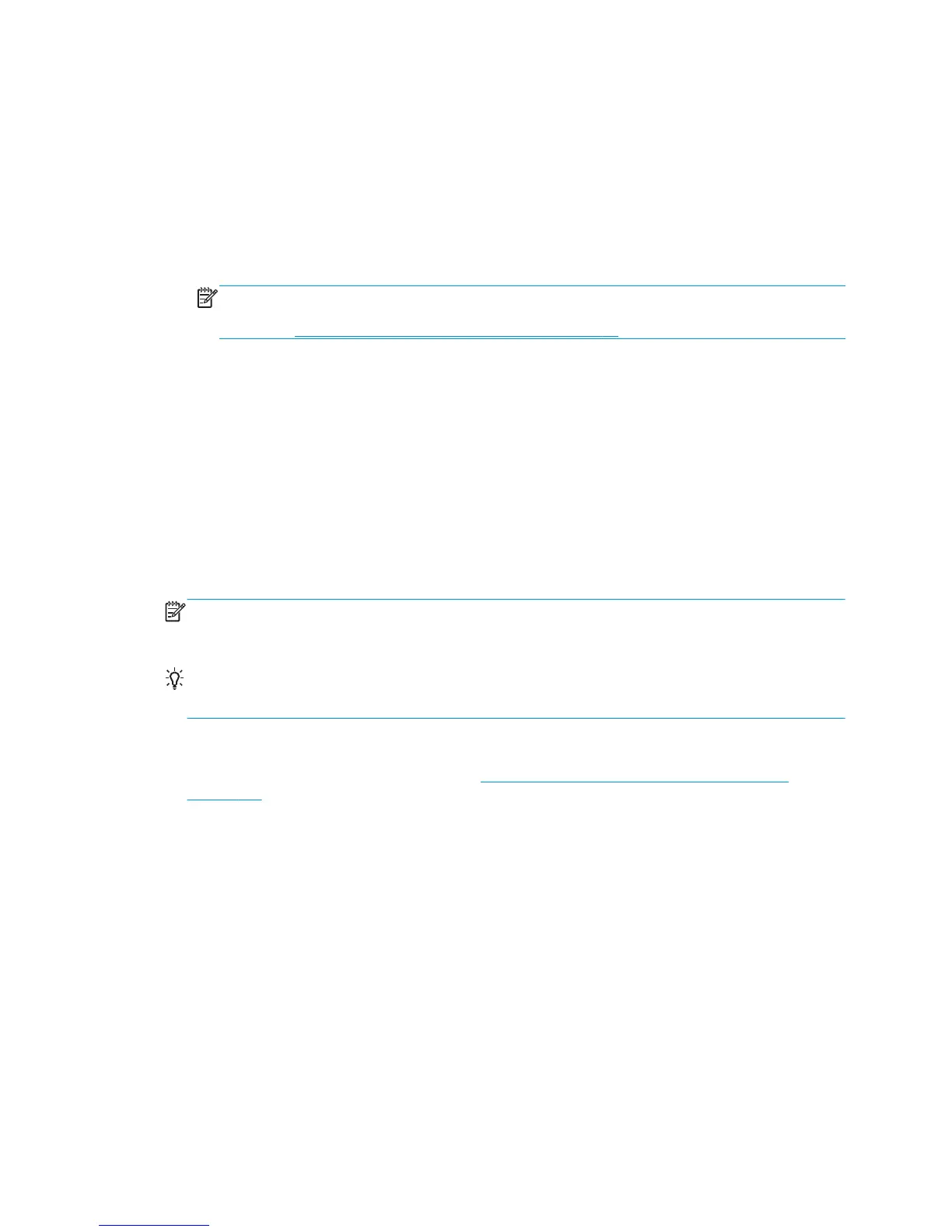4. If you are using the roll-to-roll configuration with dual-roll spindles and you see smears, or the
substrate is not adhering to the platen, mainly at the outer sides of both rolls, you are recommended to
use the center support with both spindles.
Once installed, you can try to move it up slightly from its calibrated position if you are suffering from
wrinkles or the substrate is not adhering to the platen at the outer edges. This could mean that the
support has been calibrated below the correct position.
Otherwise, you can try to move the support down a bit if you are suffering from wrinkles or the
substrate is not adhering to the platen at the inner edges near the center of the printer. This could mean
that the support has been calibrated above the correct position.
NOTE: Although the center support can be installed while printing, you are recommended to stop the
job, unload the substrate, and reload completely, even unwinding the substrate from the output
spindle. See
Load a roll (dual roll-to-roll configuration) on page 46.
5. Reload the substrate and try to minimize skew while loading. Check that you using the correct loading
procedure.
6. Increase the input tension in steps of +5 N/m from the recommended setting for each category until you
eliminate the issue.
There is skew or telescoping on the output spindle
Extreme skew (approximately 10 mm peak to peak) and telescoping in the output spindle while it winds can
be caused in two main ways:
●
The substrate has not been correctly loaded and aligned during the loading procedure.
●
The roll loaded in the input spindle is skewed, and this skew is transferred to the output spindle.
NOTE: When printing with dual rolls, you are more likely to notice skew on the output spindle. However, it is
not necessarily a problem. If it becomes a problem, proceed in the same way as for a single-roll configuration
and consider the use of the recommended center support for dual-roll spindle in both input and output.
TIP: If you notice that one of the substrate edges is not as well tensioned as the other between the platen
and the main roller, showing a wave-like shape as it enters the platen, then you are likely to have skew, and
you should consider the use of the center support for dual-roll spindle in both input and output.
Generally, the main contributor to skew is an imprecise substrate load, and the effects of that are worse with
wide rolls. However, if you have some skew or telescoping but this does not affect your print quality, and
does not generate wrinkles in the substrate (see
There are wrinkles and ink smears on the substrate
on page 224), there is no need to take any action. However, you are recommended to reload the substrate in
order to eliminate any potential problem.
Some substrate rolls already come with skew; in that case the recommendations are as follows:
1. Try to load the substrate following the correct procedure, taking as a reference of the roll’s width the
average between peaks of skew.
ENWW Printing issues 223

